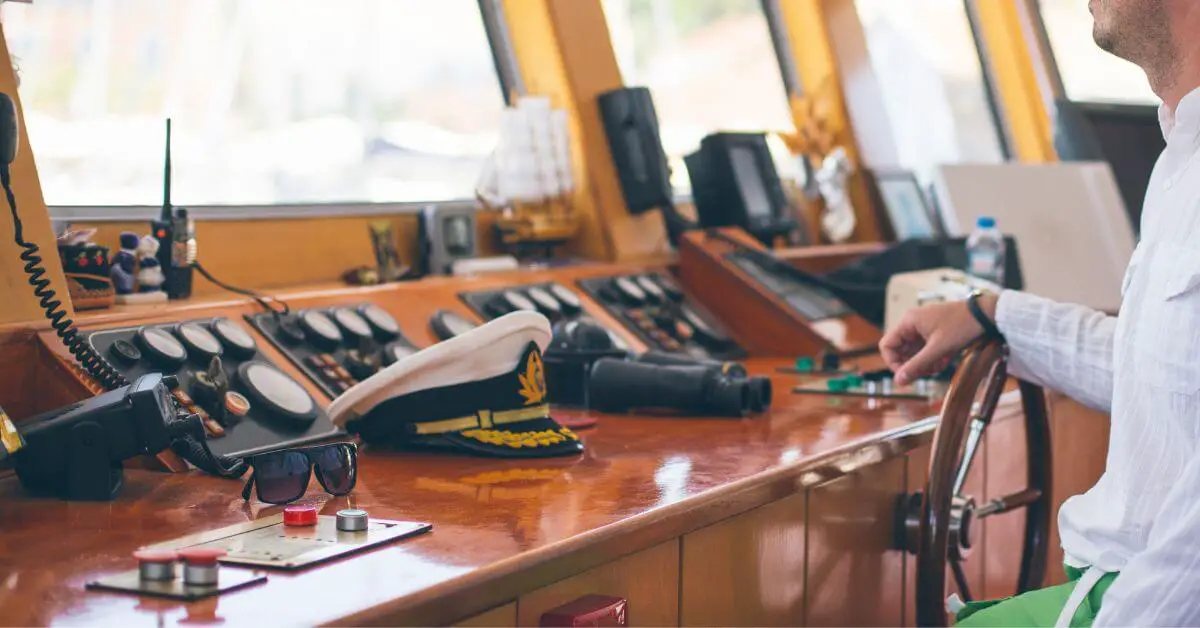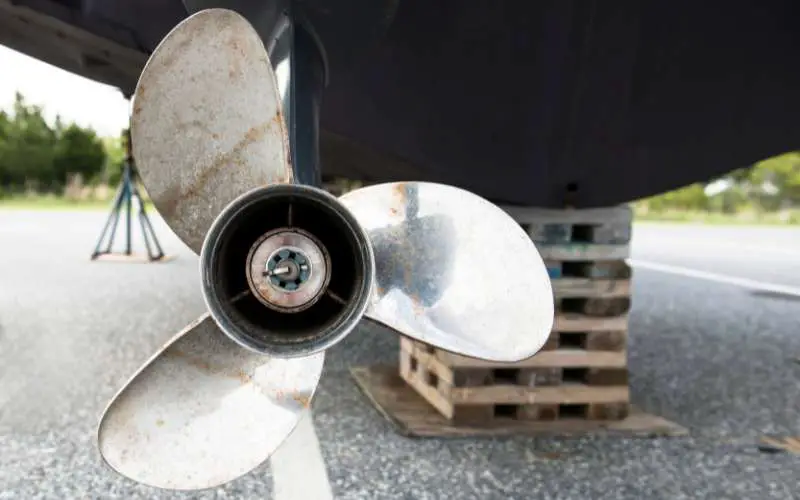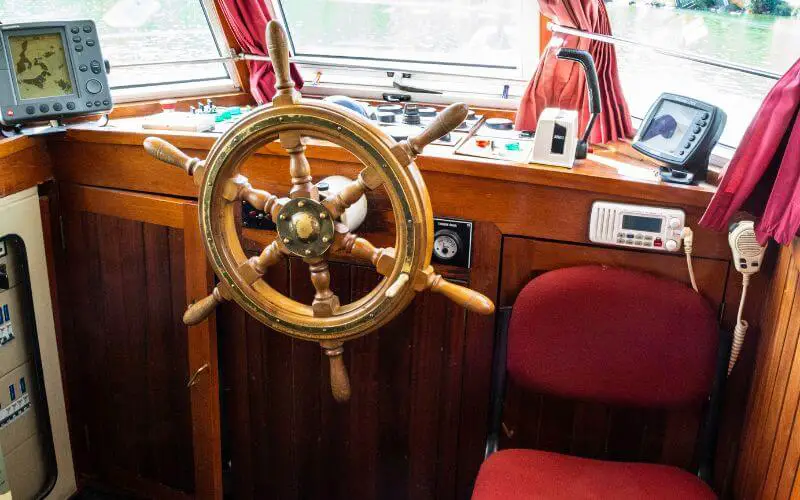If you’re ready to embark on a boating adventure and take hold of the helm, it’s time to dive into the world of boat steering, an art that combines practicality, finesse, and a sense of adventure. Steering systems consist of a wheel, helm, steering cable, and cable connections, all linking the wheel to the engine.
Join us as we navigate through the intricacies of steering a boat, exploring the different methods, techniques, and tips to help you become the captain of your own maritime destiny.
Getting Started: Understanding the Basics of Boat Steering
Before we set sail, let’s familiarize ourselves with the fundamentals. Steering a boat involves manipulating the helm, which controls the rudder, a crucial component responsible for changing the direction of your vessel. Boaters often pay little attention to a boat’s steering system, as long as it takes the boat in the desired direction.
Simply stated, a boat’s steering system determines the boat’s course when the steering wheel is turned and, like most other systems on a boat, needs regular inspection, maintenance, and cleaning during the boating season. Here are some key terms you’ll encounter on your steering journey:
Helm
The helm of a boat refers to the steering mechanism or control center. It is the place where the boat’s captain or helmsman controls and directs the course of the vessel.
The helm is typically consists of a wheel, tiller, or similar device that the operator uses to turn the boat in the desired direction. The helm is an essential component for navigating and maneuvering a boat safely on the water.
Rudder
The rudder of a boat is a flat, vertical or horizontal plate that is attached to the stern (rear) of the vessel. It is one of the most critical components of the steering system and is responsible for controlling the direction of the boat.
The rudder is connected to the helm, and when the helmsman turns the wheel, the movement is translated into a corresponding movement of the rudder. As the rudder moves, the force of the water flowing over it creates a pressure differential that causes the boat to turn. The size and shape of the rudder depend on the boat’s design, size, and purpose.
Propeller
A boat propeller is a device that converts the rotational motion from the boat’s engine into directional thrust, propelling the boat forward or backward through the water. As the propeller rotates, its blades push against the water, creating a force that propels the boat. The resistance between the propeller and the water forces the boat onward through the water.
If your prop is near the surface, you will have little or no control of direction or speed. If the surface water is being churned up by the prop, you have limited your control of the boat.
Steering Wheel
The steering wheel of a boat is the primary control device used by the helmsman to steer the vessel. It is often located at the helm, which is the control center of the boat. Similar to a steering wheel in a car, the boat’s steering wheel is typically round and can be turned left or right to change the direction of the boat. Using a steering wheel on a boat is very similar to using a steering wheel in an automobile.
The steering wheel is connected to the boat’s rudder through a mechanical linkage or hydraulic system, allowing the helmsman to control the movement of the rudder and, in turn, steer the boat. The steering wheel is an essential component for navigating and maneuvering a boat safely on the water.
Now that we have a solid understanding of the essentials, let’s dive into the different techniques and methods of boat steering!
The Art of Steering: Techniques and Methods
1. Steering with a Steering Wheel
Steering a boat equipped with a steering wheel is the most common method used in powerboats. Mastering this technique requires coordination, finesse, and a touch of intuition. Here’s how you can become a steering wheel maestro:
1. Get a Grip: A boat has no grip on the water, unlike car tires on a road. A power boat is steered by a motor located at the stern instead of in a car by the front wheels. Take hold of the steering wheel firmly, but not too tightly. Keep your hands relaxed to absorb any vibrations or sudden movements.
2. Visualize the Turn: Before initiating a turn, visualize the direction you want to go. This mental preparation will help you anticipate the movement and adjust your steering accordingly.
3. Smooth Motion: Begin the turn by gently turning the steering wheel in the desired direction. Use small, controlled movements to avoid drastic shifts. Remember, smooth and gradual turns are key to maintaining stability and balance.
4. Navigate Straight: When steering in a straight line, occasionally check your course to ensure you’re on the right track. Make slight adjustments as needed to correct any deviations.
2. Steering with a Tiller
If you’re sailing a smaller vessel like a sailboat or a smaller outboard-powered boat, you’ll likely encounter a tiller instead of a steering wheel. Sailing with a tiller can be a delightful experience, providing a closer connection to the water and a direct control over your boat. Here’s how to embrace the tiller technique:
1. Position Yourself: Stand or sit comfortably at the stern (back) of the boat, close to the tiller. Ensure you have a clear line of sight to the water and your surroundings.
2. Master the Basics: The tiller moves from side to side, controlling the rudder’s angle. Moving the tiller to the left or right will steer the boat in the opposite direction.
3. Gentle Adjustments: Similar to steering with a wheel, make small and gentle adjustments to guide your boat smoothly. Be mindful of sudden movements, as they can destabilize the vessel.
4. Respond to the Elements: Sailing with a tiller requires adaptability. Keep an eye on the wind, waves, and other factors that may affect your boat’s course. Make necessary adjustments to navigate with finesse.
Pro Tips to Enhance Your Boat Steering Skills
To truly master the art of boat steering, here are some expert tips that will take your skills from good to great:
1. Practice, Practice, Practice: Like any skill, practice makes perfect. Take the time to familiarize yourself with your boat’s steering mechanism, learning how it responds to different inputs and conditions.
2. Develop a Feel: Pay attention to how your boat responds to your steering commands. Over time, you’ll develop a natural sense of the boat’s behavior, allowing you to make intuitive adjustments.
3. Be Precise: Accuracy is key when steering a boat. Train yourself to make small and deliberate movements to achieve the desired results.
4. Anticipate the Turns: Look ahead and anticipate any turns or obstacles in your path. Planning in advance will enable you to make smoother and more controlled steering adjustments.
5. Communicate with Your Crew: If you have a crew onboard, communication is essential. Clearly communicate your intentions to ensure everyone is prepared for any steering adjustments and can maintain their balance and safety.
6. Monitor Your Boat’s Trim: Proper boat trim is crucial for efficient and effective steering. Ensure your boat is properly balanced and not leaning to one side, as this can affect your steering capabilities.
7. Stay Informed: Stay updated on local boating regulations, navigational markers, and any potential hazards in the area where you plan to steer your boat. This knowledge will help you navigate safely and responsibly.
Safety First: Steering with Caution
While steering a boat offers a thrilling sense of freedom, safety should always be your top priority. Here are some safety tips to keep in mind:
1. Wear a Life Jacket: Ensure that everyone on your boat wears a properly fitted life jacket at all times. Safety should never be compromised.
2. Stay Sober: Do not operate a boat under the influence of alcohol or drugs. This impairs judgment and reaction time, posing a risk to yourself and others.
3. Maintain a Safe Speed: Observe speed limits and adjust your speed according to the conditions and navigational hazards.
4. Adapt to the Weather: Be aware of changing weather conditions and adjust your steering techniques accordingly. High winds, rough waters, and other adverse weather elements may require more cautious steering. When you steer, allow for changing winds coming from either side. Your boat acts as a big “sail,” and it will follow the direction of the wind, so adjust for it. Waves and winds are the tricky part of maneuvering your boat into a lift.
5. Stay Alert: Scan the surroundings at all times, keeping an eye out for other watercraft, obstacles, and swimmers. Be prepared to make steering adjustments as needed.
6. Know Your Boat’s Limitations: Understand the limitations of your boat’s steering capabilities and avoid pushing beyond its boundaries. Don’t be afraid to seek assistance or professional help if needed.
What Is The Pivot Point?
The pivot point of a boat is an imaginary point around which the boat rotates when it turns. It is not a fixed location and can change depending on the boat’s speed and heading. When a boat turns to a particular direction, even for a short amount of time, it marks the beginning of the turning circle phenomenon. The pivot point of a boat is used to describe the boat’s turning circle maneuverability and handling at sea.
The location of the pivot point in a boat is determined by the design of the boat, the position and size of the rudder, and the distribution of the boat’s weight. A boat’s pivot point is generally located about one-third of the boat’s length from the bow when moving forward and at or near the stern when moving backward.
If a ship is moving, the pivot point will be moved towards the front of the boat. In reality, the front of the boat acts similar to a pivot point while the stern is the steering point.
Knowing the location of a boat’s pivot point is essential for understanding the boat’s maneuverability and handling characteristics. It helps boat operators make better decisions about how to handle the boat in different situations and minimize the risk of accidents.
Conclusion
Steering a boat is an exhilarating experience, allowing you to explore new horizons, chase sunsets, and seek freedom on the open sea.
Embrace the art of boat steering, honing your skills through practice, adaptability, and a deep connection to the water. With each journey, you’ll gain confidence in your abilities, whether you’re at the helm of a powerboat or skillfully guiding a sailboat.
Remember, safety is paramount. By prioritizing safety and exercising caution, you can enjoy the thrilling adventure of steering a boat while creating lasting memories on your maritime voyage.











